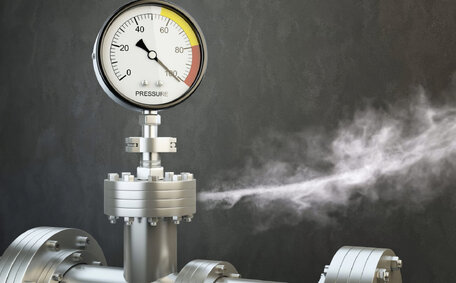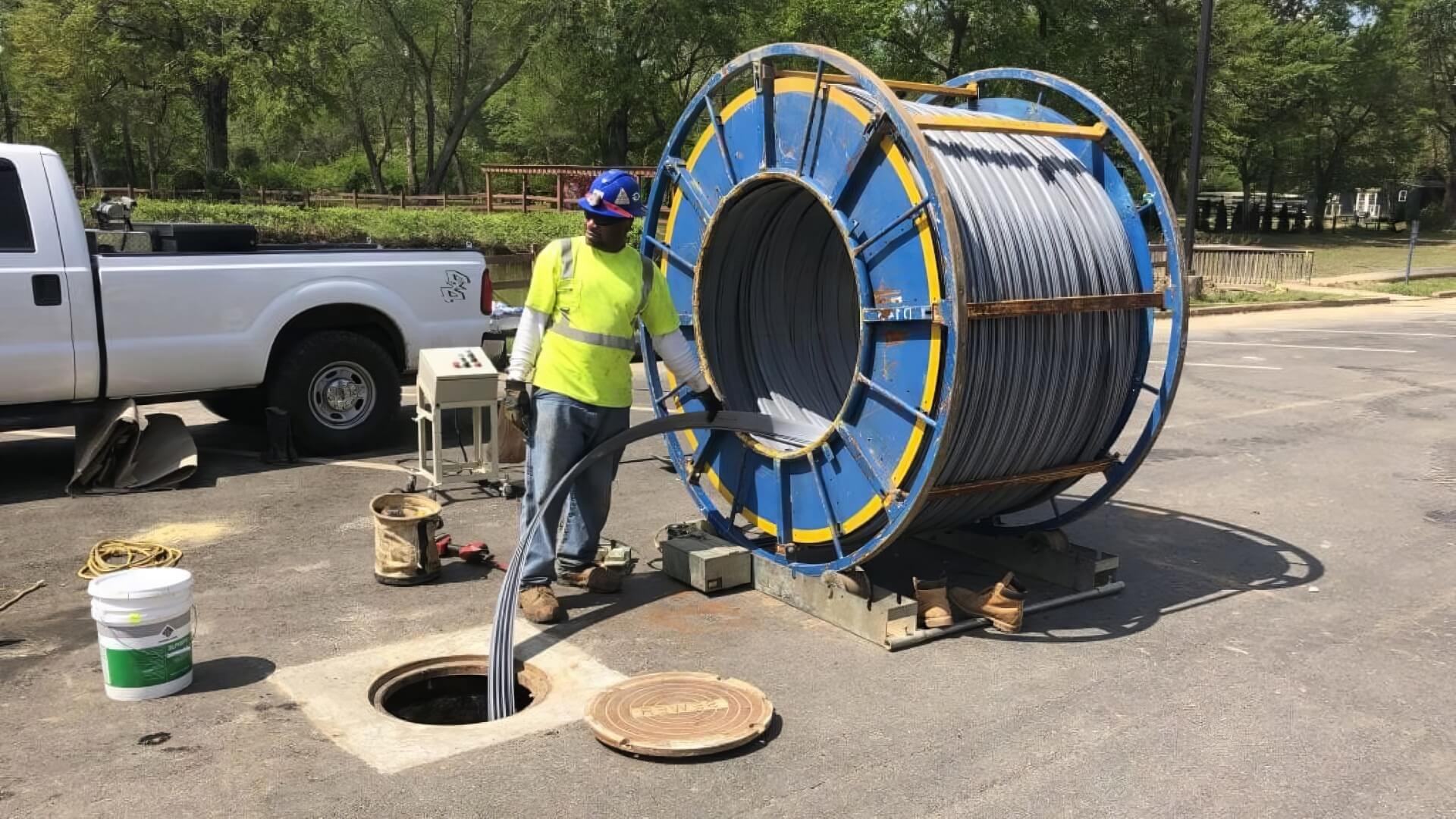What is Pipe Relining?
Pipe relining is a trenchless plumbing solution provided by Guildford Plumbing that renews old, damaged pipes without having to dig them up. This process involves inserting a flexible epoxy resin lining into the existing pipe, which cures to form a smooth, watertight seal.
Once cured, the liner essentially creates a 'pipe within a pipe’ that restores function and flow.
Pipe relining is perfect for restoring cracked, corroded and root infiltrated drains, sewers and pipes up to 300mm diameter. The flexible resin lining moulds itself to the inside walls of the pipe, bonds tightly and cures rock-hard. And with an expected lifespan of over 50 years, relined pipes are built to last.
This prevents further damage, while also resolving any drainage issues.
Compared to traditional pipe replacement methods, pipe relining is a more cost-effective and less disruptive solution. It requires no excavation or destruction to flooring or landscaping. We can reline pipes in as little as a day, with minimal impact to your property or business. Pipe relining also produces no debris, making it an environmentally friendly repair method.
At Guildford Plumbing, we have the experience and expertise to deliver professional pipe relining services. We use CCTV drain inspections to assess and measure damaged pipes, before precision-cutting liners and resin to size. After placing and curing the liner, we reinspect the pipe to ensure a smooth, long-lasting result.
How Pipe Relining Works
Pipe relining is a multi-step process that requires expertise and precision to deliver high-quality, long-lasting results. Here is an overview of what’s involved:
- Inspection: First, we use a CCTV drain camera to thoroughly inspect the damaged pipe and identify any obstructions or issues. This allows us to measure the pipe length and diameter to size the liner accordingly.
- Preparation: We clear any built-up debris, roots, grease or mineral deposits to ensure the liner can adhere properly to the pipe walls. Obstructions are removed.
- Liner Placement: Next, we wet the pipe and insert the flexible, epoxy resin-impregnated liner according to the pipe measurements. An inflatable bladder is used to invert the liner into place.
- Curing: Once positioned correctly, we fill the liner with hot water or steam to catalyse the curing process. As it heats up, the resin hardens and bonds to the old pipe walls.
- Cool Down and Trimming: After curing, we flush cool water through the liner and trim off any excess material at the pipe openings.
- Final CCTV Inspection: Finally, we reinspect the pipe with a camera to ensure no defects, a smooth surface and that full flow capacity has been restored.
At Guildford Plumbing, our expert plumbers follow industry best practises to deliver seamless pipe relining with minimal disruption. We take care of everything from inspection to cured liner for long-lasting results you can rely on.
Disadvantages of Pipe Relining
While pipe relining offers many benefits, there are some potential downsides to consider:
Limited pipe sizes - Most relining systems can only accommodate pipes up to 12 inches (300mm) in diameter. For larger pipes, replacement may be required.
Access limitations - Areas with multiple tight bends or blockages may prove difficult or impossible to reline if CCTV cameras and liners cannot get through.
Cost - For shorter pipe sections, replacement can sometimes be a cheaper option than relining.
Skill required - Pipe relining can only be delivered by experienced, certified plumbers. Poor workmanship affects results.
Curing time - The curing process means pipes cannot be used for around 8-12 hours. Planning and preparation is required.
Flow reduction - The liner can marginally reduce the flow capacity in some pipes. This is usually only an issue in main sewer lines.
In most residential and commercial settings though, pipe relining remains a highly effective and long-lasting repair method. At Guildford Plumbing, our skilled team minimises limitations through precision inspections, measurements and installations.
How Long Does Pipe Relining Last?
p>p>p>p>p>p>p>p>p>p>p>p>p>p>p>p>
Pipe Materials Suitable for Relining
Pipe relining can be used to repair and restore most common piping materials, including:
- Concrete - Concrete pipes are susceptible to cracking, collapse and root infiltration over time. Relining provides an affordable repair method.
- Cast iron - Old cast iron drains often corrode and rust, causing blockages and leaks. Relining renews worn sections without excavation.
- Copper - Pinhole leaks, splits and corrosion damage in copper pipes can all be resolved with epoxy relining.
- PVC/Plastic - Cracked or broken PVC, ABS and other plastic pipes can often be repaired with relining as an alternative to replacement.
At Guildford Plumbing, our experienced teams have lined pipes in homes and businesses across a wide range of materials. We select the ideal resin and process to suit your existing pipes. With precision installations, we can reline pipes up to 300mm diameter for long-lasting waterproof results.
When to Choose Pipe Relining Over Replacement
There are several scenarios where pipe relining is the preferred solution over full pipe replacement:
1. Leaks and cracks in otherwise good pipes - Relining can repair isolated damage and leaks in pipes that are otherwise in good structural condition. Replacement of the entire pipe run would be unnecessary and costly.
2. Roots or debris obstructing flow - Pipe relining provides an affordable solution for clearing root infiltration or build up restricting flow. It avoids the major work of replacing the whole pipe.
3. Under floors and behind walls - Accessing pipes under concrete slabs or behind finished walls and ceilings often requires significant demolition. Relining eliminates this damage and disruption inside the home.
4. Under pathways, gardens and lawns - Excavating to replace pipes located beneath landscaped areas, gardens and outdoor structures can often be prevented through relining.
5. Difficult to access locations - Tight, confined spaces where excavation and pipe access would be impractical or impossible are ideal sites for pipe relining.
6. As a preventative measure - Relining can serve as an affordable preventative solution to renew pipes before leaks or breaks occur.
At Guildford Plumbing, we have extensive experience knowing when pipe relining is the superior choice over pipe replacement. Our expert teams take the time to thoroughly assess your pipes and drainage issues to recommend the right solutions.
Estimated Cost of Pipe Relining
Pipe relining is often a cost-effective alternative to full pipe replacement. The exact price can vary considerably based on factors like:
- Type and size of pipes being relined
- Number of pipes requiring repair
- Pipe length and degree of damage
- Accessibility to pipe locations
- Whether obstructions like roots or buildup need clearing
- Location and regional labour costs
As a guide, relining pipes under a typical home can range from $2,000 - $5,000 on average. However, prices ultimately depend on your unique requirements. We provide free CCTV inspections and quotes so you know the exact costs upfront.
While pipe relining may cost more than temporary fixes like patching small leaks, it offers a long-lasting solution that can avoid future drainage issues. The cost is also far less than a full pipe replacement, which often exceeds $10,000.
At Guildford Plumbing, we offer competitive pricing and flexible payment options. Our experienced team focuses on minimising disruption to deliver the most cost-effective pipe renewal possible. We stand behind the quality of our workmanship.
For an accurate pipe relining quote tailored to your property’s needs, contact our team today to book your free inspection.
How to Find a Qualified Pipe Relining Company
p>p>p>p>p>p>






